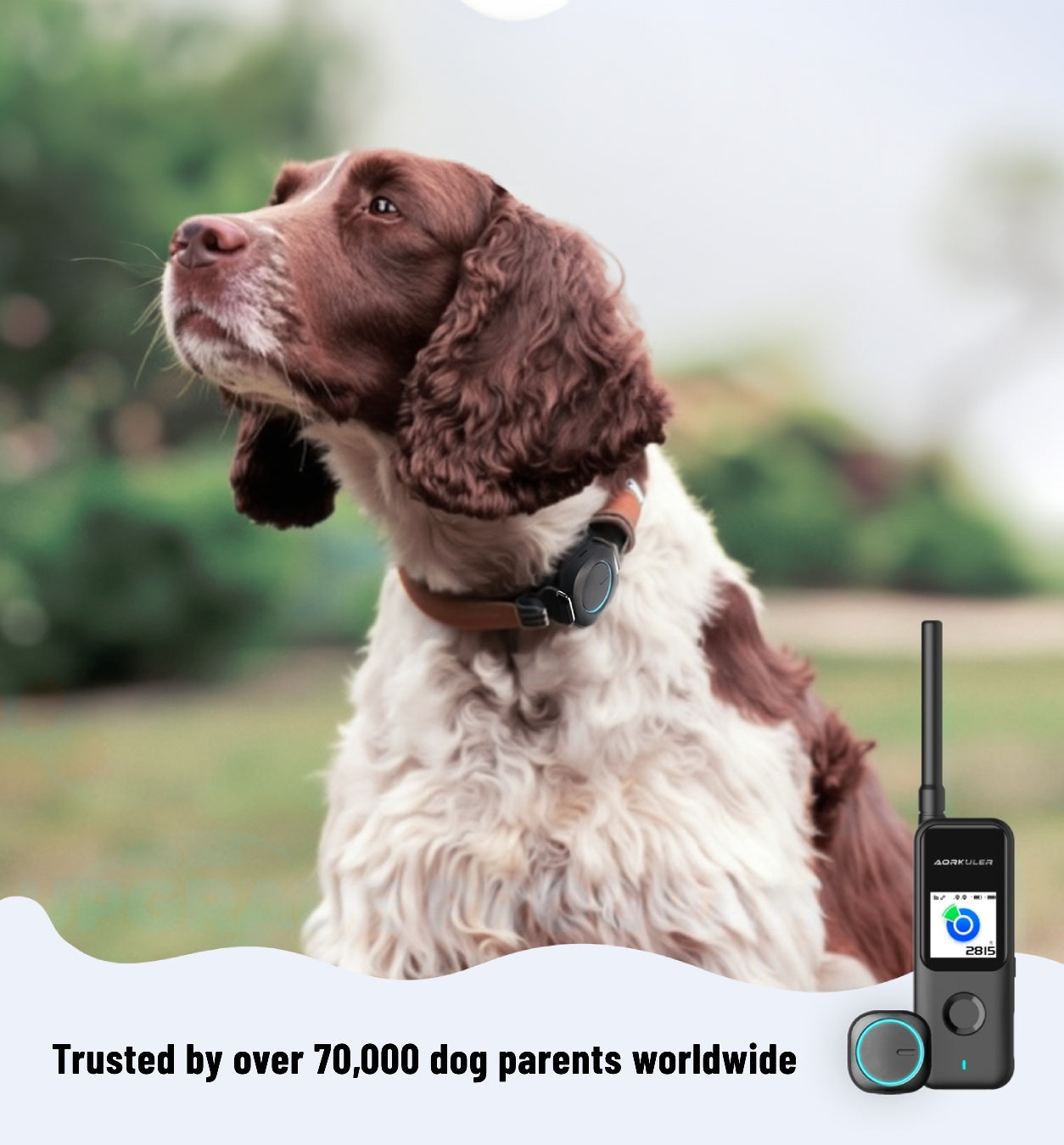Dog Trackers for Small Dogs: How to Choose the Right Tracker for Your Pet
1. Size and Comfort Come First – Choosing Dog Trackers for Small Dogs
Small dogs are very sensitive to anything hanging around their necks. Even a tiny bit of weight or movement can make them uncomfortable, affect their safety, or get caught on things.
We’ve measured dimension for the main dog GPS trackers on the market and created a visual comparison so you can easily see how these devices stack up.
![]()
Quick takeaway: AirTag, Aorkuler, Fi, and FitBark are all compact trackers well-suited for small dogs.
Other well-known brands, like SpotOn and Halo, tend to be bulky and aren’t really suitable for small dogs. Garmin and Dogtra, for a small dog, feel more like carrying a big radio with an long antenna—so you can go ahead and skip looking into them.
2. Dog Trackers for Small Dogs: Choosing the Right Tracker for Your Environment
Besides size and weight, another key factor to consider is the technology each tracker uses.
Broadly speaking, trackers can be grouped by whether they rely on a cellular network:
-
GPS + LTE (Cellular) Trackers (e.g., Tractive, Fi, PitPat, FitBark)
→ Reliable where cell coverage is good, requires a subscription (some include the subscription in the hardware price, like PitPat). -
Bluetooth Crowd Network Trackers (e.g., AirTag)
→ Lightweight and subscription-free, but only updates when near other iPhone users.Keep in mind: if your small dog goes missing in a remote area, relying on cellular or Bluetooth alone can be risky.
-
Wireless Network Trackers (e.g., Aorkuler)
→ Compact, subscription-free, and independent of cellular service, with a limited operating range (Aorkuler’s range is roughly 3.5 miles, is it enough?).
Quick guidance:
-
If you live in a city or areas with reliable cell service, a cellular-based tracker is a solid choice.
-
If you frequently take your small dog hiking, camping, or live in an area with poor service, consider trackers that don’t rely on a cellular connection.
![]()
Photo by Rae's parent
3.Comparing Other Key Features of Dog Trackers for Small Dogs
Once you’ve considered size and technology, you can further compare features like waterproof, battery life, and health monitoring to find the best tracker for your small dog.
We’ve also put together a table with some key details like dimensions, weight, and waterproof rating for a more complete comparison.
| Model | Size (L × W × H mm) | Weight (g) | Subscription | Waterproof Rating | Battery Life |
|---|---|---|---|---|---|
| Tractive Dog 6 | 71 × 28 × 18 | 40 | Yes | IP68 | up to 7 days |
| Fi Series 3+ | 51 × 28 × 13 | 28 | Yes | IP68 | up to 3 months |
| PitPat GPS Tracker | 60 × 34 × 18 | 30 | Yes | IP67 | up to 7 days |
| FitBark 2nd Gen | 47 × 30 × 15 | 16 | Yes | IP67 | up to 20 days |
| Aorkuler GPS Tracker | 44 × 44 × 19 | 30 | No | IP67 | up to 14 days |

Photo by @gizmoandponyo
4. Questions You Might Have About Dog Trackers for Small Dogs
1) Why isn’t there a GPS chip that can be implanted?
-
A GPS chip needs an antenna and communication module (cellular or wireless) to transmit location data.
-
The system also requires a battery to power it. The size and weight of the battery make it nearly impossible to implant in a small dog.
-
Batteries need repeated charging, which is impractical for implanted devices.
For small dogs, pairing an internal chip with a lightweight external tracker is still the most practical option.
2) Is Aorkuler’s 3.5-mile range enough?
-
Aorkuler’s tracking radius is about 3.5 miles (varies with terrain), and it sends location data in real-time. If your dog moves out of range, the device logs the last known position. When you head there, the connection often reconnects quickly, updating the current location immediately.
-
Most dogs don’t run far from home. Small dogs, in particular, tend to stay half a mile at most due to stamina and self-preservation instincts.
In short, Aorkuler’s 3.5-mile range is more than sufficient for most small dogs, and can still provide useful tracking for medium to large dogs within their typical roaming distances.
